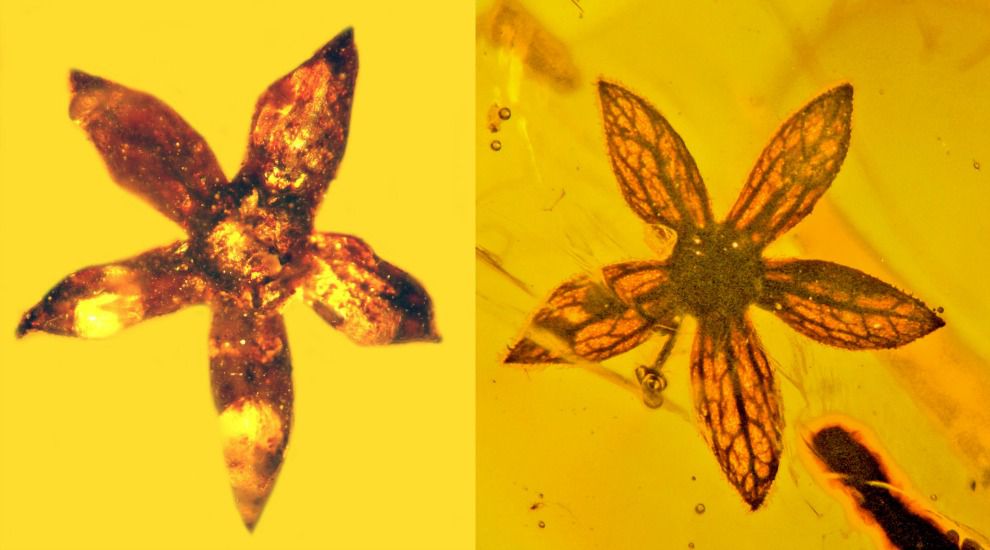One day, in a rainforest on a content that no longer exists, a Triceratops or a Tyrannosaurus rex may have bumped into a tree, knocking seven little flowers into a glob of tree resin, which fossilized into amber, preserving the flowers for the next 100 million years.
Over that time, the world changed, species died and came into being, and eventually, humans in Myanmar pulled the amber from the earth and passed it along until it ended up at Oregon State University. Last week, researchers at the university proclaimed the flowers remnants of a newly discovered species that tells a fascinating story about our planet.
“The amber preserved the floral parts so well that they look like they were just picked from the garden,” said professor George Poinar Jr., one of the researchers studying the flowers, in a statement released by the university.
“Dinosaurs may have knocked the branches that dropped the flowers into resin deposits on the bark of an araucaria tree, which is thought to have produced the resin that fossilized into the amber. Araucaria trees are related to kauri pines found today in New Zealand and Australia, and kauri pines produce a special resin that resists weathering,” he said.
That is not the only connection between the newly discovered flower and the landmasses of the southern hemisphere. Poinar and his colleagues named the flower Tropidogyne pentaptera, which, in Latin, hints at its five firm, spreading sepals. This species, along with another flower discovered in Myanmar amber in 2010, were placed in the Cunoniaceae, whose 27 genera are found around Australia and Papua New Guinea.
So how did an ancient flower whose only relatives live near Australia end up more than 4,000 miles away in Myanmar? Poinar says the explanation lies in the geological history of these regions.
“Probably, the amber site in Myanmar was part of Greater India that separated from the southern hemisphere, the supercontinent Gondwanaland, and drifted to southern Asia,” he said. “Malaysia, including Burma, was formed during the Paleozoic and Mesozoic eras by subduction of terranes that successfully separated and then moved northward by continental drift.”
In other words, Myanmar and Australia used to be closer to each other, but then the continents changed. It’s almost impossible for a person to imagine that happening over tens of millions of years, but these flowers are evidence of that slow yet monumental event.





Reader Interactions